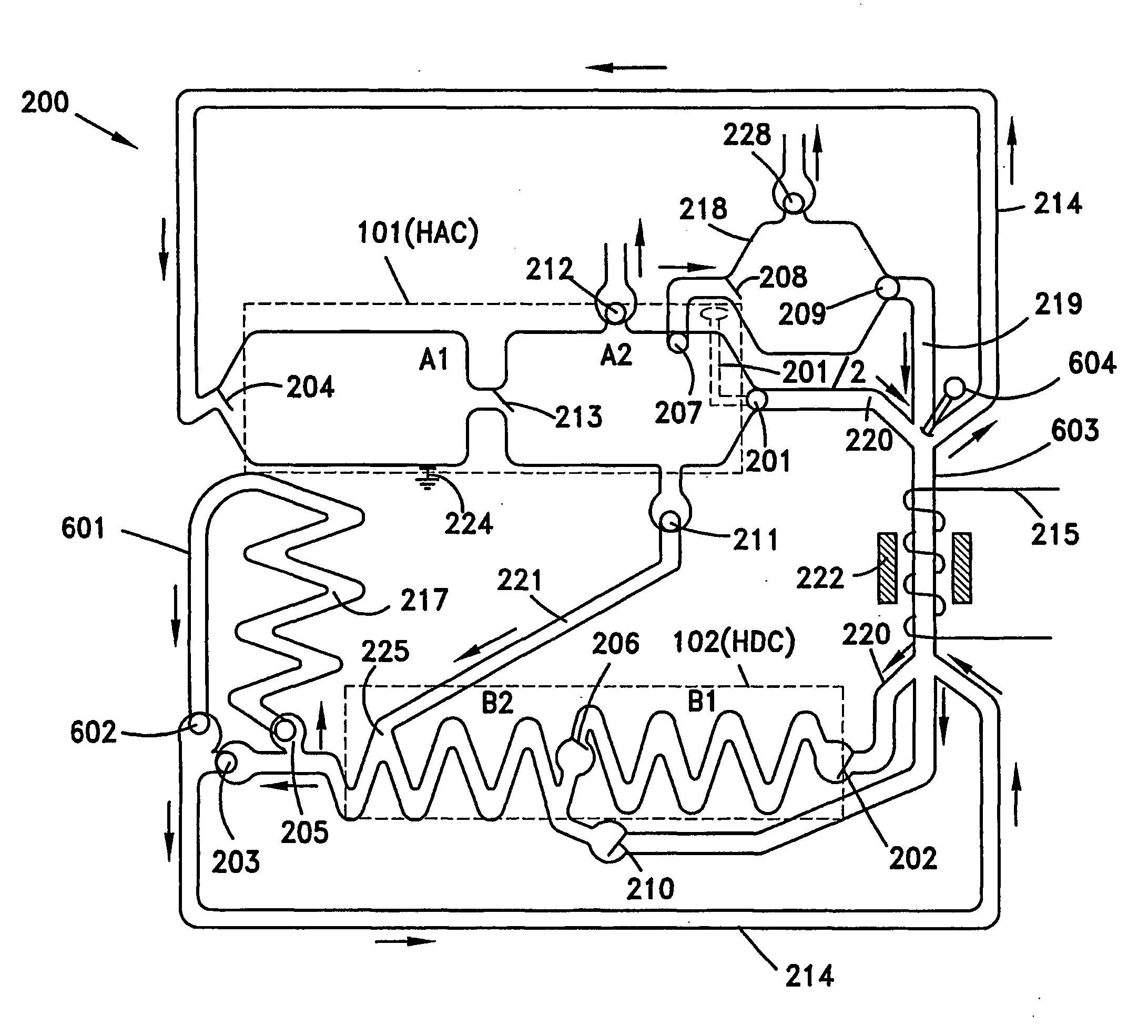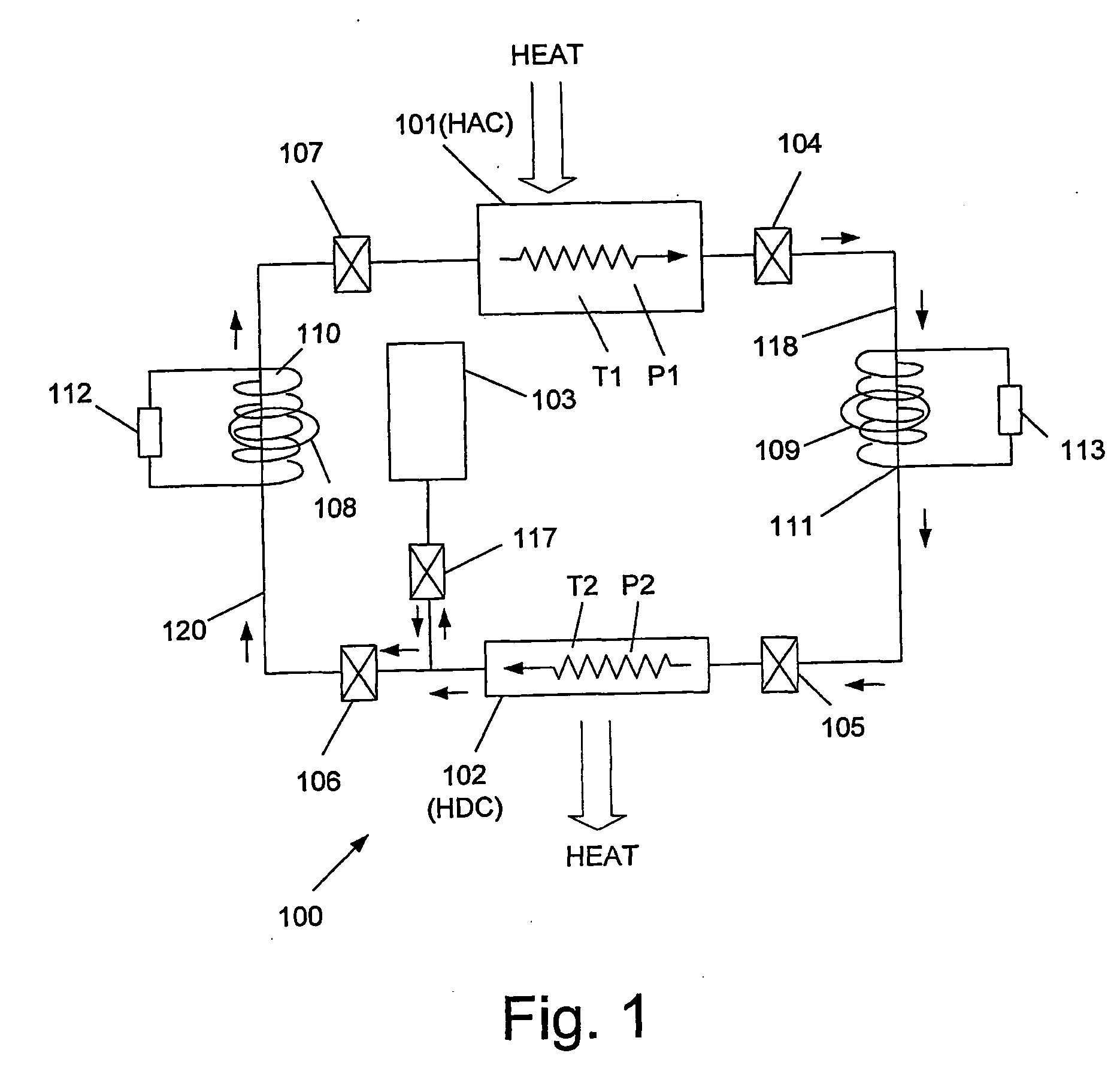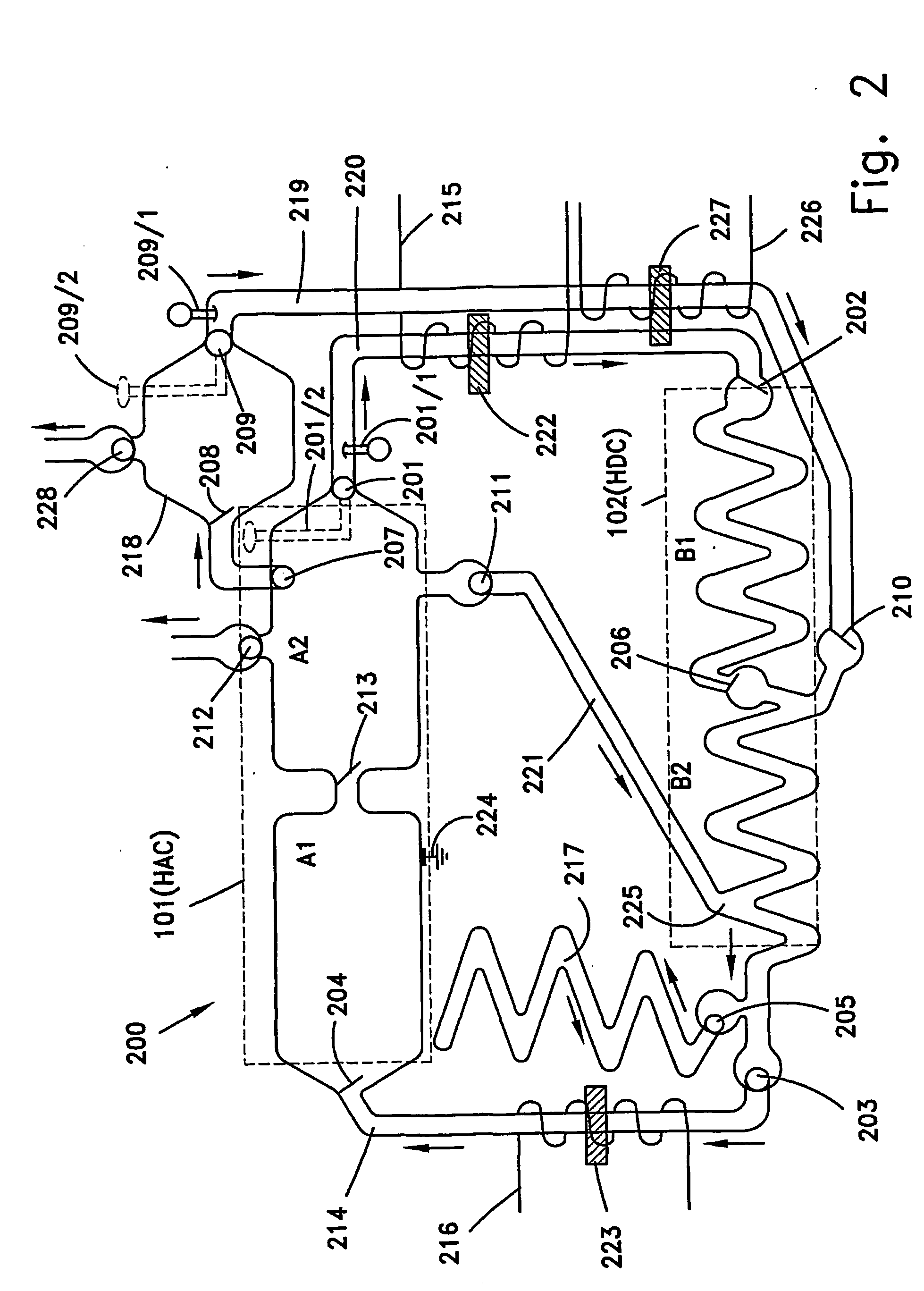Thermal to electrical energy converter
a converter and thermal energy technology, applied in the direction of machines/engines, lighting and heating apparatus, magnetic bodies, etc., can solve the problems of increasing the final cost of the electrical energy produced using, and affecting the efficiency of the conversion process, so as to reduce the difference between the pressure inside the hac and the hdc
- Summary
- Abstract
- Description
- Claims
- Application Information
AI Technical Summary
Benefits of technology
Problems solved by technology
Method used
Image
Examples
Embodiment Construction
[0093] The energy converter of the invention is basically a device capable of absorbing heat from an external heat source and producing electricity while delivering a portion of the heat to a cold temperature reservoir. The external heat source, which provides the required heat to the converter, can be essentially any heat source. For example, the heat can be provided by a nuclear power station, or from an air condition system, or a compressor or any operating engine or an electric motor. In the preferred embodiment the heat source is the surrounding environment and solar radiation. In contrast to conventional industrial power plants, the present system does not use energy consuming machinery such as compressors or pumps. The working substance of the energy converter of the invention is a ferrofluid with intrinsic magnetic properties instead of superheated steam that is usually utilized in conventional power plants to drive a turbine. The ferrofluid coexists together with its vapor ...
PUM
 Login to View More
Login to View More Abstract
Description
Claims
Application Information
 Login to View More
Login to View More - R&D
- Intellectual Property
- Life Sciences
- Materials
- Tech Scout
- Unparalleled Data Quality
- Higher Quality Content
- 60% Fewer Hallucinations
Browse by: Latest US Patents, China's latest patents, Technical Efficacy Thesaurus, Application Domain, Technology Topic, Popular Technical Reports.
© 2025 PatSnap. All rights reserved.Legal|Privacy policy|Modern Slavery Act Transparency Statement|Sitemap|About US| Contact US: help@patsnap.com



